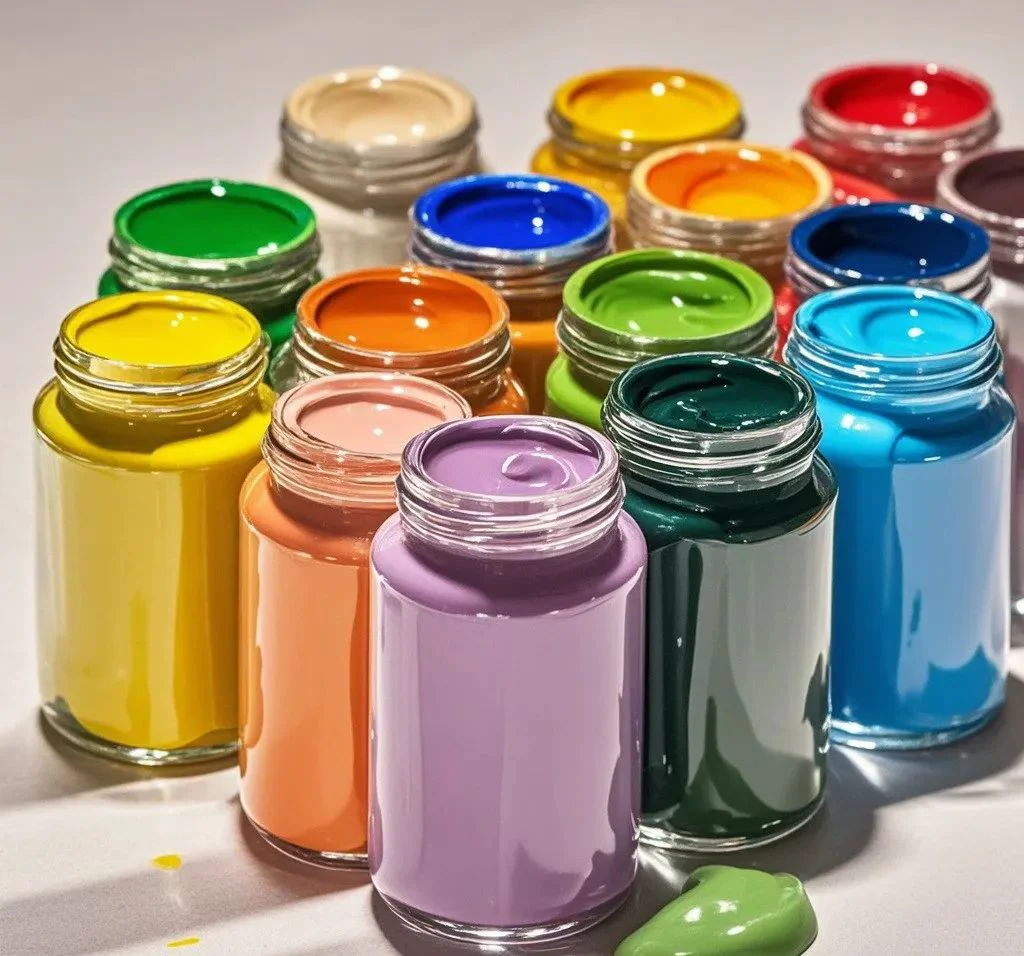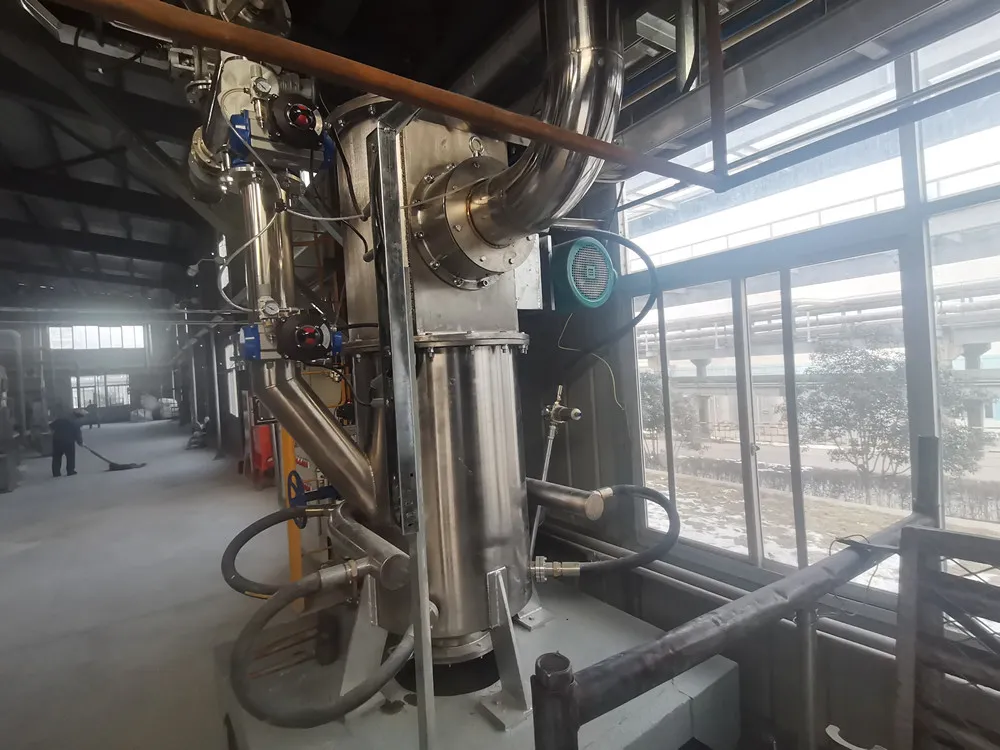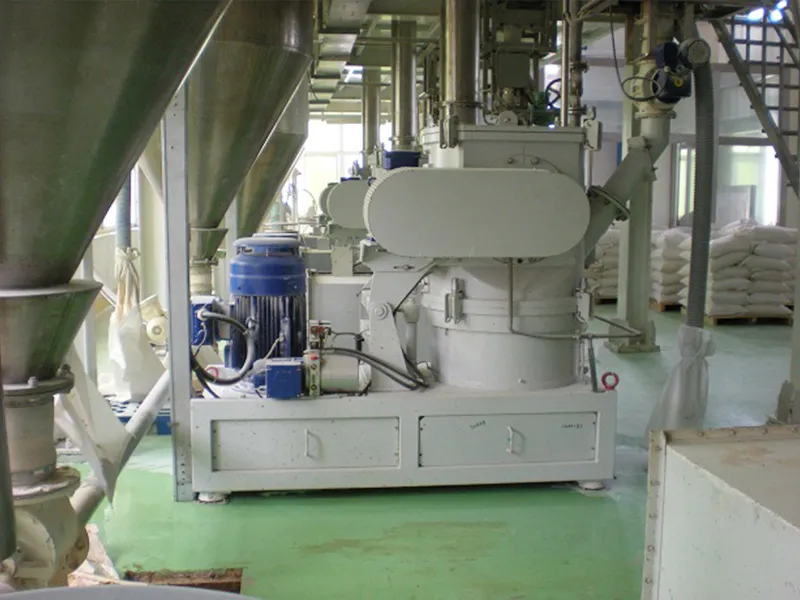Paint grinding is vital for making high-quality paints and coatings. This technique uses a machine to reduce pigment particles. It aims for a specific fineness and dispersion. This affects the final product’s color, texture, and performance. During paint grinding, we use various equipment. This includes jet mills, ACM mills, ball mills, bead mills, and high-shear mixers. They ensure that pigments are evenly distributed in the medium. This process must be efficient. It affects the paint’s look, durability, and application. By mastering paint grinding, manufacturers can produce better coatings. They will meet the diverse needs of various industries.
There are four key considerations in paint production. They are the paint’s flow state, the pigment’s dispersion in it, its wettability to the pigment, and the product’s processing accuracy. First, select the grinding and dispersing equipment. It will determine the process’s basic mode.

Based on the flow of the product or grind slurry, paint can be divided into 4 categories:
① Easy to flow
such as magnetic paint, primer, etc.;
② Paste-like
such as thick paint, putty and some thick paste-type art paints, etc.;
③ Color chips
such as high-pigment components based on nitro, perchlorethylene, and polyvinyl butyral. They are solid at 20-30℃ and become mixable plastics after heating.
④ Solid powder state
The pigment in the paint is dispersed in the molten resin. Various powder coating products are examples. The final product is a solid powder.
Pigments can be divided into five types based on their dispersion in the paint
① Fine-particle and easy-to-disperse synthetic pigments
The particle size of the original particles is less than 1um, and it is relatively easy to disperse in the paint. Inorganic pigments, like titanium dioxide, lead powder, and zinc oxide. And organic pigments, like red powder and toluidine red.
② Fine-particle and difficult-to-disperse synthetic pigments
Its original particles are fine, but their structure makes them hard to disperse in the paint. This is the case for carbon black and iron blue, for example.
③ Coarse-particle natural pigments and fillers
Its original particles are about 5-40 um, or larger. It includes red clay, barium sulfate, calcium carbonate, and talcum powder.
④ Micronized natural pigments and fillers
Its original particles are 1-10 um, or smaller. It has ultra-finely crushed natural red iron oxide, precipitated barium sulfate, calcium carbonate, and talc.
⑤ Abrasive pigments
Such as red lead and non-micronized red iron oxide.
According to the wettability of paint to color, it can be divided into the following three categories:
① Good wetting properties
such as oil-based, natural resin, phenolic resin, and alkyd paints;
② Medium wetting properties.
such as epoxy, acrylic, and polyester resin paints;
③ Poor wetting properties
such as nitrocellulose solution, perchlorethylene resin, etc.
Based on product precision, paint has three categories:
① Low-precision
Product fineness is above 40um;
② Medium-precision
Product fineness is between 15 and 20um;
③ High-precision
Product fineness is below 15um.
A review of the four factors will guide the choice of grinding and dispersing equipment.
Recommended paint grinding and dispersing machine
Jet Mill

Overview of Jet Mills for Paint Grinding
Jet mills are specialized grinding equipment utilized for producing ultra-fine particles, particularly in industries such as paints and coatings. They operate by using high-pressure compressed air or gas to create high-velocity collisions between particles, resulting in effective size reduction without mechanical wear. This technology is especially beneficial for materials that require high purity and minimal contamination.
Applications in Paint Grinding:
Jet mills are particularly suited for grinding paint materials due to their ability to achieve very fine particle sizes (down to 1 micron or smaller) while maintaining product purity. This is crucial for achieving uniformity in paint formulations.
They can handle various types of materials including heat-sensitive compounds, which are common in paint formulations.
Advantages:
High Purity: The design minimizes contamination risks, essential for color consistency in paints.
Low Temperature Grinding: The process does not generate significant heat, preventing degradation of sensitive materials.
Versatility: Capable of processing a wide range of materials from pigments to polymers without the need for extensive modifications.
Operational Efficiency:
Jet mills can be equipped with advanced control systems (like PLCs) that optimize the grinding process and ensure reproducibility of particle sizes.
They also incorporate features like explosion-proof designs and nitrogen circulation systems for enhanced safety during operation.
ACM Mill

ACM Mill for Paint Grinding
The Air Classifying Mill (ACM) is a versatile and efficient tool for grinding paint and similar materials. It combines grinding, classifying, and conveying operations in a single unit, making it particularly suitable for producing ultra-fine powders required in the paint industry.
Applications in Paint Industry
Fineness and Uniformity: The ACM can achieve particle sizes down to a few microns (d97 = 10 µm), which is essential for fine pigments used in paints.
Temperature Control: The design allows for cool and gentle grinding, minimizing heat generation that could degrade sensitive materials.
Compact Design: Its space-saving design integrates multiple functions, reducing the need for additional equipment and simplifying the production process.
Versatility: The ACM is suitable for various applications beyond paints, including chemicals, food products, and pharmaceuticals, making it a flexible choice for manufacturers.
The ACM is particularly effective for grinding various types of pigments and resins used in paint formulations. Its ability to handle hygroscopic and heat-sensitive materials makes it ideal for modern paint production processes that require high purity and minimal contamination.
The mill’s capability to produce steep particle size distributions ensures that the final product meets specific performance criteria, such as color strength and stability.
Conclusion
Grinding and dispersing machines are efficient for fine, easy-to-disperse synthetic pigments, coarse, micronized natural pigments, and other paint slurries. They have high production capacity and good dispersion accuracy. They use low energy, are quiet, and have low solvent volatilization. They have a simple structure, easy maintenance, and can run continuously. So, they are widely used to make various enamels and primers.
